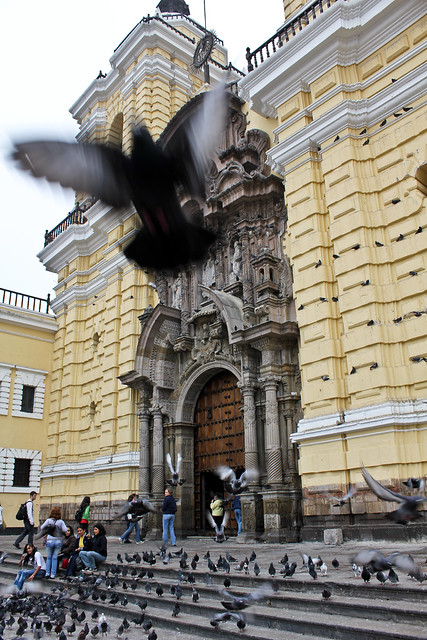There is a little bit of a fight brewing in Chicago over the future expansion of O’Hare.
Mr. Emanuel is at odds with airline boss Jeff Smisek over expansion of O’Hare International Airport. The CEO of United Continental Holdings Inc. jabbed at Mr. Emanuel recently, saying there’s no need to finish the multibillion-dollar project launched seven years ago.
Both men have the best interests of their businesses (Chicago is Mr. Emanuel’s “business”) in mind as they discuss the upgrades and expansion of Chicago’s O’Hare airport. Mr. Smisek is trying to control United’s costs by limiting their involvement in the expansion of the airport.
Mr. Emanuel can’t afford to let O’Hare fall behind rival airports. Mr. Smisek, on the other hand, has a different agenda. Unlike airline execs of the past, whose expansionist strategies dovetailed with the city’s desire for an ever-bigger O’Hare, he’s focused on the bottom line. He aims to boost profits by reducing capacity and competition in the airline industry, which has a long history of big spending, bloody fare wars and monumental losses. His merger of Houston-based Continental Airlines Inc. and Chicago’s UAL Corp. advanced those aims while creating an airline with unprecedented market power, the largest in the industry.
The interesting take away here is that apparently Mr. Smisek hates competition, yet none of this came up during the merger of United and Continental, which truly reduced competition. And why is no one bringing this up in the possible merger of US Airways and American Airlines? If competition is so important, then enforce it when carriers try to remove competition directly by merging.
All of this should be a warning sign to those looking at the airline industry from the outside. The airlines are struggling and they are trying to do all they can to survive. For some, that means merging, for others that means looking at operations and reducing capacity and for others it’s a combination of both. And this is not just a problem in the United States, just look at Lufthana’s announcements about reducing regional jets from the fleet, removing first class from some aircraft, etc.
Then there is this article I came across. What stuck out to me was this:
The terms of the debate are different in Chicago, but the bottom line is the same. What’s best for the city may not be best for United Airlines, and vice versa. There’s nothing particularly remarkable about a large company with near-monopoly control in a given market doing whatever it can to keep competition out. What is remarkable is that the argument to allow such competition would somehow be damaging to consumers is given any credibility.
We sure are getting lax with our throwing around of the “m”-word. United and American Airlines both have major hubs at Chicago O’Hare but that has not kept carriers from starting service to the airport. Virgin America has a number of new flights to and from Chicago. And neither airline has tried to limit Southwest’s operations at Chicago Midway. During the city council meeting in Houston the word “monopoly” was thrown around a lot as well. United does not control the Terminal D/E FIS facility. Other airlines are free to come and go as they please. Southwest used to even have gates at IAH. They gave those up to move to Hobby and in doing so, gave up their option to fly international flights. TACA, Aeromexico, and VivaAerobus all fly to Latin America from IAH, clearly, United does not have a monopoly. The other airlines’ operations are not huge but that isn’t because of a monopoly, it’s because IAH is not their hub. By this monopoly logic, American Airlines has a monopoly in DFW even though plenty of other airlines have flights there. Or, heaven forbid, Southwest has a monopoly at Hobby and Love Field.
Let me refer you back to the two posts in which my wife Tiffany Tyler analyzed Southwest’s proposal and the claims United was making at the time, which seem to have evolved somewhat. I understand United’s fear of this proposal. I understand their threats regarding Terminal B at IAH, though given the growth projections for IAH and the fact that they want to close down the former Continental hub in Cleveland it’s hard for me to take those threats too seriously – where else are they going to go? Unlike Southwest, which says it will go to San Antonio for their Latin American and Caribbean business if Hobby is not available to them, they’re pretty much locked in. What I don’t understand is how having more competition, even if it’s just for a handful of Latin American routes, can be bad for travelers. It makes no sense to me, and according to his press release it makes no sense to CM Andrew Burks, either. I hope in the end it makes no sense to the rest of Council.
The problem is not necessarily that there is competition, it’s the fact that the competition is based on false figures ($133 Houston-Bogota fares). Where will United go if Hobby is allowed to have international flights? Denver. They have plenty of gates there and can serve the connecting traffic just as well from there as from IAH. In fact, I’m sure the city of Denver would be happy to have more people flying through their airport. During the city council meeting Southwest offered to build the necessary gates and pay for the FIS facilities at Hobby. I say let them do that. If the city does not have to pick up the cost then there is no reason not to let them try to compete in the Latin-American markets.


